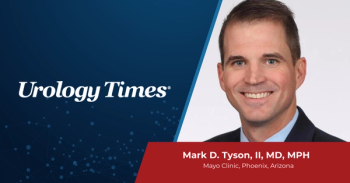
Dr. Henderson recaps LUGPA session on bladder cancer clinics
"This all started because of the tidal wave of new therapies that are coming out for bladder cancer," says Jonathan Henderson, MD.
In this interview, Jonathan Henderson, MD, highlights key take-home messages from a session at the 2023 LUGPA Annual Meeting in Orlando, Florida titled, “Successful Bladder Cancer Programs: What you should be offering your patients today and tomorrow?” Henderson is a urologist and the director of research at Arkansas Urology in Little Rock, Arkansas, as well as a past president of LUGPA.
Video Transcript:
The bladder cancer clinics are the next big advent in our groups. It's taken a similar path that our prostate cancer clinics took about 10 years ago, in which we concentrate and specialize within our practices and use the nurse practitioners to a little more advanced application to provide better care to the patients. This all started because of the tidal wave of new therapies that are coming out for bladder cancer. One of the biggest take-homes, I think, from the session yesterday was an adequate TUR is needed. So, a complete resection and a re-resection of tumors are needed, and not significantly done in our practices. Another thing we discussed is the fact that current guidelines aren't really adhered to for a variety of reasons. Post-operative installation of a chemotherapeutic agent such as gemcitabine within 24 hours of resection, that's not routinely done; about 20% of the time is that adhered to for a variety of reasons. So, we have to do better with following our current guidelines before we get trusted with all these new therapies.
This transcription has been edited for clarity.
Newsletter
Stay current with the latest urology news and practice-changing insights — sign up now for the essential updates every urologist needs.


















